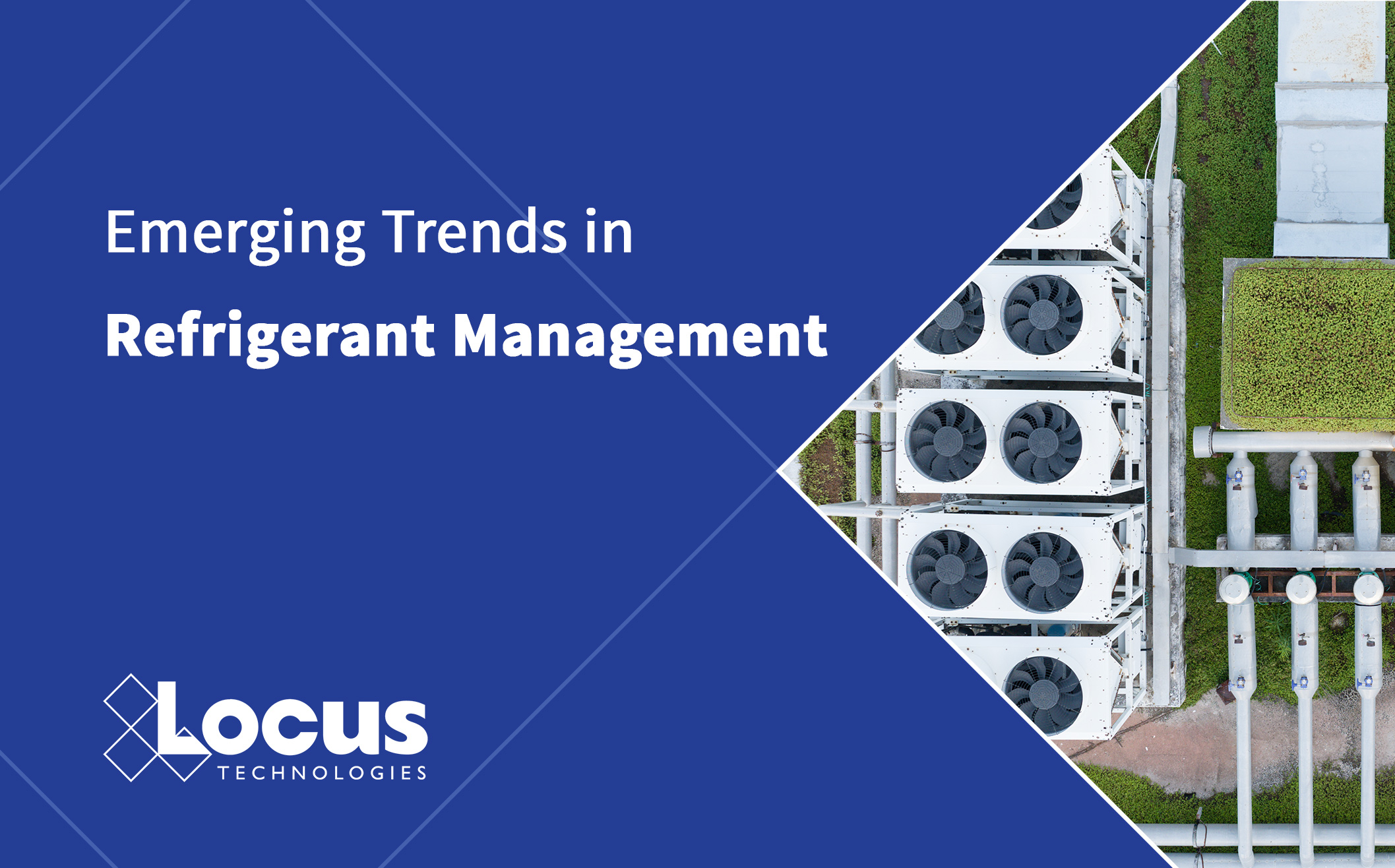Industrial Controls that Stand the Test of Time
How one man helped modernize environmental remediation systems – one switch at a time
In December of 2024, Dan Ducasse, Locus Technologies’ longest-serving employee retired after contributing to the company’s growth and evolution for 28 years. Dan joined Locus just 6 months after the company opened its doors in Silicon Valley in 1997, and he proceeded to design and build state-of-the-art industrial control systems for dozens of Locus’s environmental clients. His innovations include complex mechanical automation for many of the titans in semiconductors, aerospace, ag science, and railroads. While Dan is ready to move on, his industrial control systems are staying put, protecting all of us.
“When I started, we barely had computers. Now everything is computerized and we’re moving to AI.”
While pursuing his Bachelor of Science in Engineering Technology Manufacturing Processes at California Polytechnic State University (Cal Poly), robotics had already started transforming assembly lines in manufacturing plants, but the field of industrial automation was still new. Consider this: computers were the size of rooms, and nobody had an email account yet. But the “worldwide web” and the first personal computers were right around the corner, promising to revolutionize industry and forge new career paths. Just like we currently stand on the brink of the Age of AI, Dan’s career began on the precipice of a step-change in technology. At that time, he didn’t know where his path would take him, nor the scope, scale, and stakes of the machining he would do.
The new frontier: engineering environmental solutions in the west
While Dan was entering the workforce, another discovery was also rocking our world: there was a clear link between human health and manufacturing waste. In the wake of the US EPA’s Superfund Program launch, huge enterprises were investing big money to reverse the environmental damage their industrial processes had caused. Remedial Action Plans were mandated to control contaminant levels and treat multiple matrices. Construction and engineering companies were hired to design and develop complex remediation systems to remove contaminants from the soil, groundwater, and air around these operations. These systems were vast, and they cost companies millions of dollars to build and operate.
Of course, necessity is the mother of invention. Dan and his fellow Locus engineers understood the potential for mechanical automation, industrial controls, and fiber optics to optimize the success of these remediation sites. Dan had stumbled upon a niche for automation that couldn’t have been foreseen when he was programming robotic arms at Cal Poly. He had embarked on a career to ensure the systems that clean our water, soil, and air keep running day after day.
Improving the biggest, ‘baddest’ sites
Dan created industrial control systems for some of the highest priority remediation sites in the US, including systems to address arsenic releases from pesticide plants, chemical discharges from explosives manufacturing, underground leaks of tens of thousands of gallons of toxins, and fuel leaks into rivers. The sites are usually massive in scale, spanning dozens of acres and disparate wells, or they are extremely remote, or both. They may straddle state highways or require new bridges and trenches to skirt existing infrastructure. In any case, manual operation is unrealistic long term.
But the sites aren’t just geographically challenging. They are also mechanically challenging. The Remediation Action Plans for these sites often include complex systems for groundwater extraction, soil vapor extraction, air stripping, wastewater treatment, and soil flushing. And each of those systems comes with its own cluster of equipment. There are storage tanks and miles of pipe to transport treatment chemicals. There are hydraulic control systems, electric motors, submersible pumps, vacuum pumps, vacuum blowers, and sumps. There might be flow meters, nozzles, piezometers, soil vapor probes, dehumidification units, and granulated activated carbon (GAC) absorption units and aeration towers for the treatment of emissions. Slurry walls to contain contaminants underground might be 3 feet thick, over 1,000 feet long, and vary in depth from 50 to 150 feet. These standalone elements and integrated systems track everything from flow rates and air velocity to water depth and volatile organic compound (VOC) concentrations, so it’s a big deal if something goes down. Not to mention what it would be like to manually activate and monitor these dozens, hundreds, or even thousands of devices. That’s where Dan comes in.
Imagine a vintage news reel showcasing the invention of the Ford Model T. You’d see the driver complete 9 precise, sequential steps both inside and outside of the car just to turn on the engine. Compare that to the “Push to Start” button in your car. That’s a simplified example of how Dan’s industrial automation and controls add value to complex environmental systems.
“They used to snowshoe to the remediation site. Now they push a button.”
Some of these remediation sites were in extremely remote locations. One of Dan’s clients, Union Pacific Railroad, used to snowshoe or snowcat to a mountain pass just to confirm the system was on. If they arrived and discovered a problem, they had to trek back down the mountain, collect the proper equipment, and then ascend again to resolve the issue and restart the system. It was incredibly inefficient and expensive. But even if a client’s site was in an urban area, like Fairchild Semiconductor sites in Silicon Valley, it was inefficient to travel around the geographically dispersed sites to activate systems and record various readings on a clipboard, again and again. The companies behind these Superfund sites sought out Locus and Dan’s team to reduce operating costs and boost their confidence in the systems through cutting-edge automation and remote access.
Dan and the team applied programmable logic controllers (PLC), supervisory control and data acquisition (SCADA) systems, and Internet connectivity to ensure the biggest environmental cleanups proceeded without a hitch – ultimately leading to drinkable water, tillable soil, and clean air for the surrounding communities.
“We still get compliments about our earliest control systems, and the EPA has acknowledged their durability in Five Year Reviews of Superfund sites.”
In very basic terms, a PLC is the brain of the system, processing information from machinery and then applying relay logic to trigger other actions in parallel or sequentially. For example, the PLC processes the inputs from level and flow sensors and then uses internal logic to accelerate or decelerate a pump, to open or close a valve, or to activate an alarm if a condition is met. For some sites, Dan would also use variable frequency drive (VFD) controllers to control the speed and torque of a motor by adjusting the frequency and voltage of the power supply.
Before SCADA was widely used, the operators had to work through a panel of knobs and switches for each device to turn things on and off. Dan and his team changed all that for Locus clients. They upgraded the treatment plants so they could simply press a Start button and everything else from the PLC would occur as programmed. They used SCADA to create graphical, touch-screen interfaces of the comprehensive system, enabling the operators to review and manage everything from one discrete cabinet. It marked the end of complex check lists and instructions to operate the treatment system.
“Every engagement was different, which has kept the work challenging and rewarding all these years.”
But remember: Dan’s earliest systems were being designed and built way back when disruptive brands like Netscape® and America Online® emerged. Just as Locus Technologies’ software division became the first-to-market with a web-based environmental data management product, Dan and his fellow Locus engineers took bold action to leverage the Internet for their industrial control systems. They connected the PLC for the mountain-top groundwater treatment system to a SCADA system back at HQ. No more snowshoeing to confirm a groundwater treatment system is still operational.
And for every other client: no more traveling around to each site with clipboards to collect data. Every device in the system – no matter how far away or how complex the system – could be managed and monitored from the office. For example, flow meters placed in every well were connected to a centrally located controller, so the operator didn’t have to go onsite to take a reading. Likewise, the operating data from each system could be accessed and viewed from other SCADA computers in the network. This enables operators to check on any system while they are working at any of the field locations.
“Clients seek us out to solve unique challenges.”
Word got out about the innovative systems Dan’s team at Locus was building, and prospective clients would tour his latest system to gain inspiration for their own. Dan’s team would be brought in to troubleshoot the mechanical designs for an existing treatment system or automate a system. Every project had certain elements in common, but every engagement was different. The composition of each remediation system and its devices varied which always kept the work interesting. Some clients mandated the use specific PLC or SCADA brands, and so Dan continually learned to program new products. Some clients were content with daily operating reports from the SCADA system, while others saw the opportunity to derive more business intelligence from the system.
Operational data meets scientific data
These were game-changing advancements (and outside-the-box uses of the Internet) that ensured operators’ billable time was used wisely, fewer resources were required to maintain the systems, and overall costs were minimized. Plus, the companies investing in these massive remediation mandates gained timely insights into resource utilization and the effectiveness of treatment efforts.
Information that used to be solely in paper form on someone’s desk was now instantly available to fellow engineers and management. Any data point from the industrial control system could be loaded to Locus software to be managed alongside field data, analytical data, compliance work, and more. An operator could project when to replenish the inventory of treatment chemicals by monitoring its rate of use. An environmental scientist could combine flow data from the treatment system with the analytical data from the lab to estimate how much mass of a chemical they had removed so far.
While Dan’s automation work has evolved significantly over these last 28 years, and successfully adapted to advancements in connectivity and integrations, they are now proven, turnkey, repeatable systems – and poised for the next step change in technology.
Dan’s career has been bookended by two major step changes in technology: the Internet and AI.
Dan began his career when advancements in robotics, computing, the internet, and environmental protection all converged. He and his colleagues saw the opportunity to forge a new specialty and have a positive impact. Looking ahead, how will AI enhance the systems they’ve built? Perhaps AI will accelerate the scaling of control systems. Or maybe AI will study machine performance and chemical potency to refine operations and maximize effectiveness. Or maybe AI will make machines run more efficiently, thus offsetting the energy required for AI itself. Who knows, and Dan chooses not to speculate about the next chapter.
But when asked what he would say to the younger generation of Locus employees and aspiring environmental engineers who are embarking on this next chapter: “Opportunity is around the corner, look around and explore. I wanted a career in Architecture, and then Manufacturing, but I found I could be useful in the environmental remediation industry.”
Many Happy Customers
Dan Ducasse has been instrumental in automating numerous treatment systems, leaving a lasting impact on Locus clients and the industry at large. His expertise in IoT and industrial automation has benefitted esteemed clients such as Fairchild Semiconductor, Schlumberger, Xerox, FMC Corporation, Union Pacific Railroad, Varian, Hewlett Packard, Northrop Grumman, NASA, the U.S. Navy, and many more. Clients have consistently praised Dan’s ability to simplify complex systems, improve efficiency, and enhance reliability, and they will certainly miss his contributions.
Among Dan’s remarkable achievements was his work with NASA/Ames Research Center, where his automation efforts earned Locus Technologies the prestigious 2009 Small Business Subcontractor of the Year award. As a subcontractor, Locus provided diagnostic and repair services for NASA’s automated Groundwater Treatment Systems (GWTS), successfully meeting aggressive budget and schedule constraints.
In a letter of recognition, S. Peter Worden, NASA/Ames Center Director, commended Locus for its exceptional performance: “Your company’s ability to provide diagnosis and/or a report of various automated components in a timely manner, such that there has been minimal to no ‘down time,’ is important as it is considered a value-added performance.”
Dan’s leadership in automation contributed to Locus becoming a pioneer in using the Internet to streamline monitoring and management of groundwater treatment systems. His work with NASA and other clients showcases the company’s commitment to coupling strong environmental domain expertise with innovative online software services. Dan’s legacy will continue to inspire as Locus builds on the foundation of automation excellence he helped establish.
Locus is the only self-funded water, air, soil, biological, energy, and waste EHS software company that is still owned and managed by its founder. The brightest minds in environmental science, embodied carbon, CO2 emissions, refrigerants, and PFAS hang their hats at Locus, and they’ve helped us to become a market leader in EHS software. Every client-facing employee at Locus has an advanced degree in science or professional EHS experience, and they incubate new ideas every day – such as how machine learning, AI, blockchain, and the Internet of Things will up the ante for EHS software, ESG, and sustainability.




